LED lamp E40: device, characteristics, scope
LEDs methodically displace from circulation not only household incandescent lamps, but also industrial lighting equipment. The desire to save money forces entrepreneurs and municipal authorities to look for less energy-consuming devices.
An excellent option for organizing lighting over a large area is the LED lamp E40, the design of which is compatible with many lamps in operation.
In this material we will talk about the design of LED lamps, their varieties and scope.
The content of the article:
LED lamp device
Due to the large diameter of the base, the E40 LED bulb easily accommodates many electronic components. And its increased body volume allows you to evenly distribute heat, preventing the product from overheating.
Thanks to its design features, the E40 LED lamp also receives many other advantages.
General structural elements
LED lamps E40 can vary greatly in appearance. All of them are united only by the type of screw cap, the diameter of which is 40 mm. Despite the external differences, the design of such bulbs has common features.

The main components are as follows:
- Diffuser. It is a matte volumetric shell made of plastic, located around the LEDs. It provides the most even distribution of light around the entire circumference of the lamp.
- LED crystalsbeing direct light emitters. They are located on a printed circuit board and can be of three varieties: SMD, COB, Filament.
- Printed circuit board. It has the form of a heat-conducting metal plate, which promotes the transfer of heat from working LED crystals to the radiator.
- Aluminum or metal-plastic radiator. It is usually located between the cap and the bulb, has a ribbed shape, designed to increase the heat transfer area of the bulb.
- Driver. It is a microcircuit that provides low-voltage and direct current LED crystals. A high-quality driver should not cause the lamp to flash during operation.
- Dielectric plastic or ceramic linerwhich delimits the live base and other structural elements of the LED bulb.
- Screw metal base E40, with a diameter of 40 mm. It serves to mount the lamp in the luminaire and provides current transfer from the cartridge to the driver.
If the base of the LED lamp of type E40 is always the same, then the external shape of the bulb and radiator can vary greatly.
A powerful light emitting crystal generates a lot of side heat. To maintain an acceptable operating temperature inside the housing of such lamps, a radiator with a large surface area is required.
Therefore, the size and shape of LED devices is largely due to their power and other technical specifications.
Features of the Edison Base
The letter E in the marking of the threaded base owes its origin to the lamp inventor Thomas Edison, who patented this engineering solution more than 100 years ago.
Its design has not changed over the century due to a number of advantages:
- simplicity and durability of installation;
- large contact area with the inner surface of the cartridge;
- ease of production;
- the ability to install additional parts inside the base.
The most common screw base formats are E14, E27 and E40. The double-digit number in the marking indicates their outer diameter.

The E40 cap has previously been used in arc mercury lamps and incandescent bulbs. Its large size was due to the need to increase the area of contact with the cartridge, as well as the desire to reduce the heating of the glass base in a narrow place.
E40 LED bulbs are made only to ensure compatibility with old luminaires. At present, there are no objective reasons for using such large socles.
Schematic diagrams
The cost and reliability of E40 LED bulbs is largely dependent on the quantity and quality of driver parts. And it is based on a microcircuit, which can be made in various functional options.
In the simplest version, the driver consists of a small capacitor and a voltage rectifier. The load current limiter is an SMD resistor located on the LED board. This elementary circuit does not even contain a transformer, which makes it necessary to use a strictly defined number of LEDs in it.

In such a cheap option, the lamp light will be pulsating, which can adversely affect the overall health of people nearby.
Most difficult LED driver light include the following structural elements:
- bridge rectifier with capacitive ballast limiting the input current;
- several capacitors of increased capacity located at different levels of the circuit;
- feedback system that allows you to adjust the voltage and current;
- dimming circuitry, making it possible to smoothly control the luminance of the lamp.
A high-quality driver completely removes the pulsation of the LED lamp and stabilizes the voltage supplied to the LEDs.

This increases the overall service life of the product and increases its efficiency. Complex schemes have disadvantages:
- big size;
- complexity of repair;
- high cost.
In addition to the two electrical circuits discussed, there are many intermediate options for the internal device driver. Consumers in demand are bulbs of various designs. For example, a lamp with a simple driver will be enough for night illumination of uninhabited industrial sites.
Varieties of LED lamps E40
Industrial lighting equipment is structurally much more diverse than domestic. Accordingly, the characteristics of the lamps for it require different. Of great importance is the directivity of the light, the ability to work in continuous mode and the security of the case.
Manufacturers follow the demand and offer consumers the following modifications of LED lamps:
- dustproof and waterproof;
- with an operating voltage of 110 or 220 V;
- angle of illumination from 120 to 360 degrees;
- power from 10 to 500 watts;
- from plastic, aluminum, heat resistant materials;
- with a matte, transparent bulb, with open LEDs;
- with light sensors, movement;
- dimmable;
- vibration resistant, explosion proof.
For lesser-known LED lamp manufacturers, additional options can be more of a marketing move than a real advantage. Therefore, the priority when buying should be given to lighting products of famous brands.
Features of industrial LED lamps
Lighting devices with a base E40 are used only in industrial and public spheres. Household products of this design are simply not produced.
Industrial fixtures are subject to increased requirements for reliability and resistance to external factors. Therefore, the E40 LED lamps operating in them also have a number of features:
- The value of the power factor is 0.9-0.95, and for household bulbs - 0.7-0.9.
- LEDs often have individual lenses that change the direction of the light flux.
- Extended operating temperature range. The driver in E40 bulbs is designed for heating to 110-120 ° C and cooling to -50 ° C frost.
- Increased service life - up to 10 years of continuous glow.
- The housing often has anti-vandal protection to prevent mechanical damage to the LEDs.
- The placement of LEDs on the board suggests the possibility of their replacement during repair.
- Most E40 lamps are protected from wind, rain and dust.
- The reinforced radiator allows you to actively remove heat during round-the-clock operation.
- Increased color rendering coefficient.
- Unlike mercury lamps, LED lamps do not require the installation of additional starting devices.
The above advantages significantly increase the cost of LED lamps with E40 socket. But due to the increased reliability and extended service life, such products reduce the operational costs of enterprises. Once you put such LED bulbs in the fixtures, you can not worry about them for several years.

Lighting equipment with a base E40 is replaced by modern models rather slowly. The reason is the lack of new alternative standards for connecting removable LED lamps. Another brake on equipment updates is the indifference of industrial consumers to the design and obsolescence of devices.
Areas of application for E40 lamps
The niche of devices with directional light flux in the industrial sector has long been occupied by LED spotlights. Bulbs with E40 socket are allocated a niche of diffused lighting of large areas and premises.

The main places for their use are:
- Street territory of industrial facilities, warehouses, transport bases, public institutions.
- Roadside lampposts.
- Yards of private houses, cottages.
- Shopping and entertainment centers.
- Production workshops with high ceilings.
- Stadiums.
- Hangars.
- Playgrounds.
In winter, LED lamps are good in that when they get snow they do not create a temperature difference in different parts of the body. Due to this, the strength characteristics of their flasks are not violated.
The E40 base is a relic of the past, so it is unlikely in the future it will be used in new areas.
Conclusions and useful video on the topic
In the videos, the E40 LED bulbs are shown in operation, and their internal structure is also considered.
Comparison of LED lamps with different sockets:
Overview and internal arrangement of the E40 LED bulb:
Testing high-power E40 LED corn lamps:
The native E40 base in LED bulbs is used less and less. The reason for this is the desire of manufacturers to please the maximum number of consumers. Often, they simply complete the products in E27 format with an adapter for a larger diameter. However, this does not interfere with LED lamps with a forty-millimeter diameter base to efficiently illuminate large rooms and save money on utilities and commercial enterprises.
Have questions about the topic of the article? You can ask them in the comment block, which is located under the article. You also have the opportunity to supplement this material with interesting information and facts that you know about LED lamps E40.

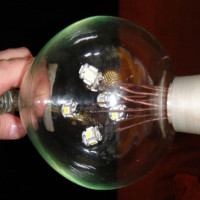 DIY LED lamp: scheme, design nuances, self-assembly
DIY LED lamp: scheme, design nuances, self-assembly 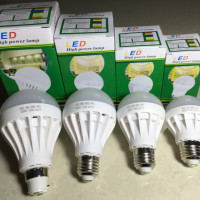 Characteristics of LED lamps: color temperature, power, light and others
Characteristics of LED lamps: color temperature, power, light and others 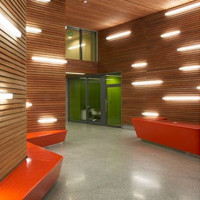 T8 LED lamps: characteristics, comparison with fluorescent + best manufacturers
T8 LED lamps: characteristics, comparison with fluorescent + best manufacturers 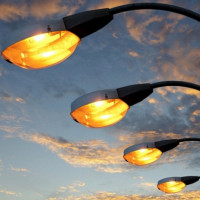 DRL lamps: device, characteristics, selection rules
DRL lamps: device, characteristics, selection rules 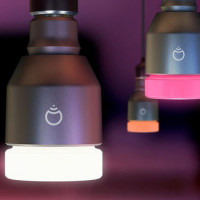 Smart lamp: features of use, types, device + overview of the best models of bulbs
Smart lamp: features of use, types, device + overview of the best models of bulbs 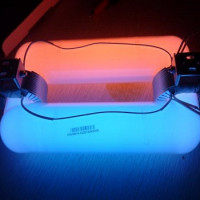 Induction lamps: device, types, scope + rules of choice
Induction lamps: device, types, scope + rules of choice  How much does it cost to connect gas to a private house: the price of organizing gas supply
How much does it cost to connect gas to a private house: the price of organizing gas supply  The best washing machines with dryer: model rating and customer tips
The best washing machines with dryer: model rating and customer tips  What is the color temperature of light and the nuances of choosing the temperature of the lamps to suit your needs
What is the color temperature of light and the nuances of choosing the temperature of the lamps to suit your needs  Replacement of a geyser in an apartment: replacement paperwork + basic norms and requirements
Replacement of a geyser in an apartment: replacement paperwork + basic norms and requirements
We use LED bulbs for a long time in everyday life. They really save the family budget.It is interesting that not very successful lamps came across. In a lampholder, for example, it worked after a purchase for no more than a week. The design of the chandelier involves the operation of 5 bulbs, all are the same set. And one after a week starts to blink, and then all the lights go out. An electrician looked and said that one light bulb was defective, but this is rare. The edge of the cap acquired a brownish color, the melting process began. The master and sorted out the cartridge and wires where this lamp was installed, also had to be changed, and there it was burnt out. He claimed that the wiring was not to blame.
I don’t understand when they talk about an obsolete moral base in a light bulb. What is the difference how this light bulb will contact the cartridge? Will it be screwed in or inserted? For me it’s generally a drum. And to be absolutely objective, new contact groups will appear only when they invent a fundamentally new light source, but not before.
Daniel, I generally believe that the E cap is one of the most convenient and practical. All the advantages in them: standardization, simplicity, reliability. Why come up with something else?